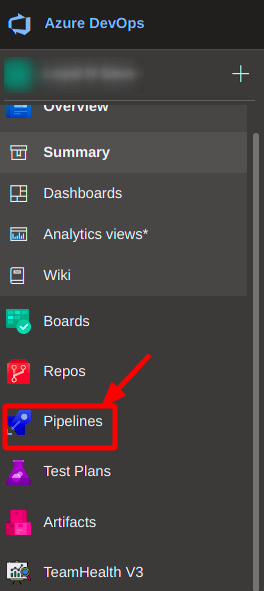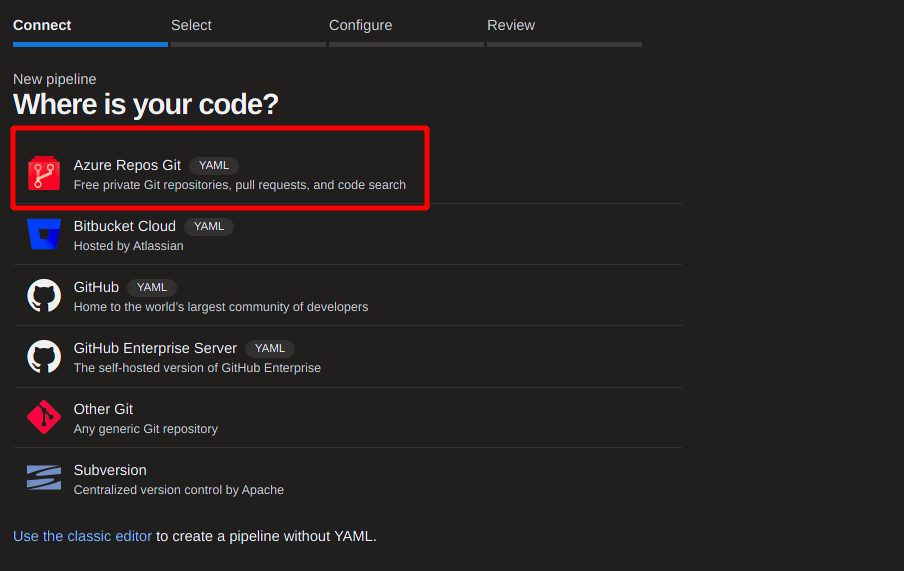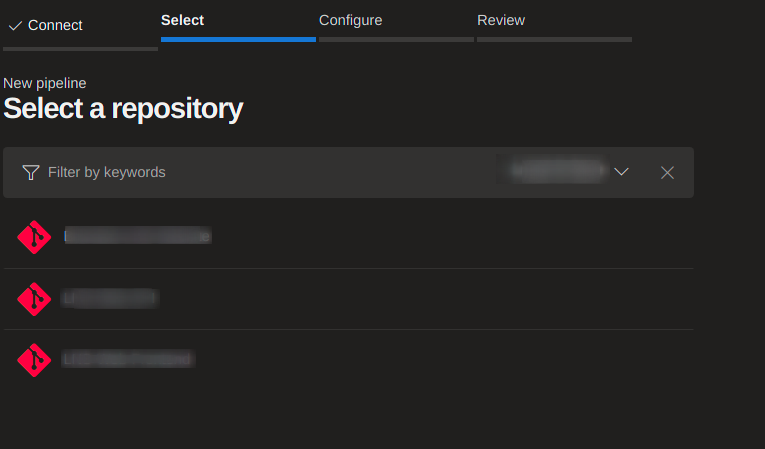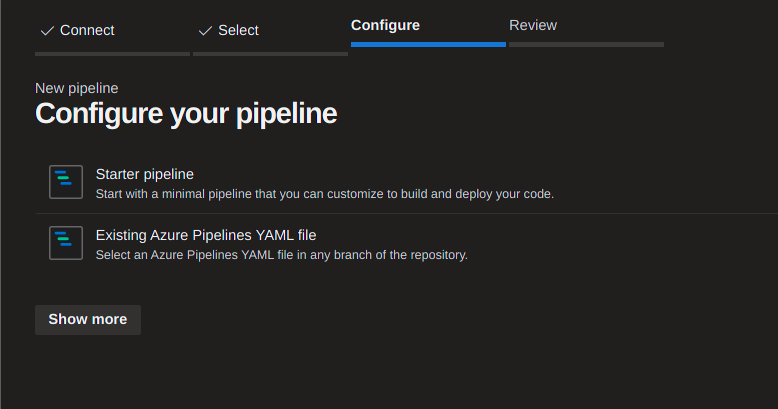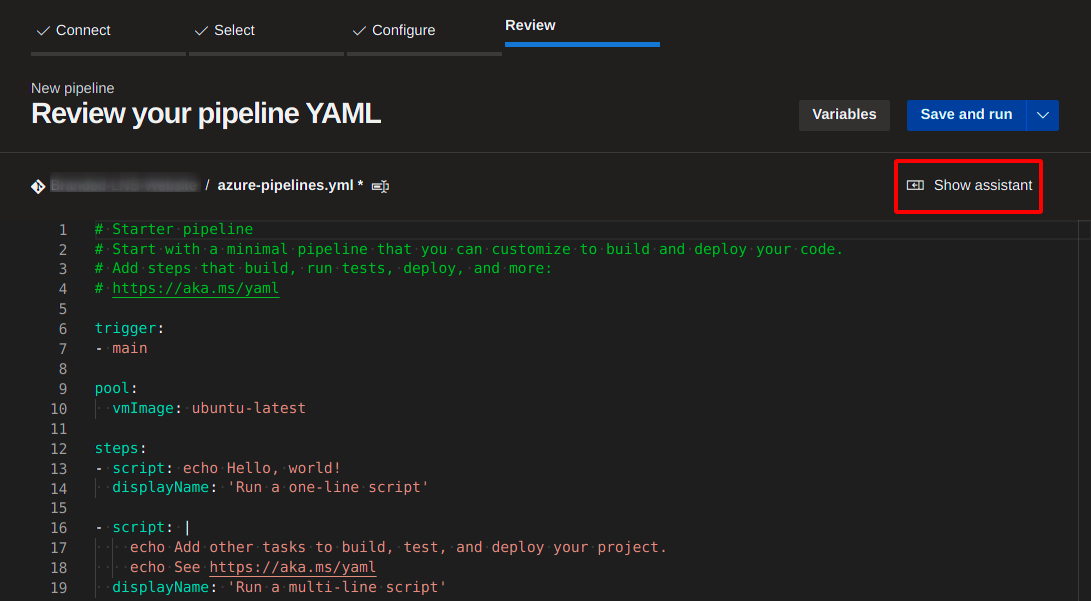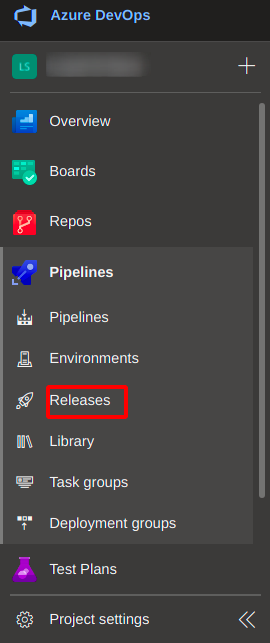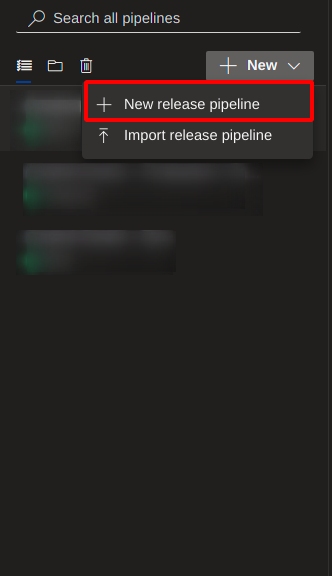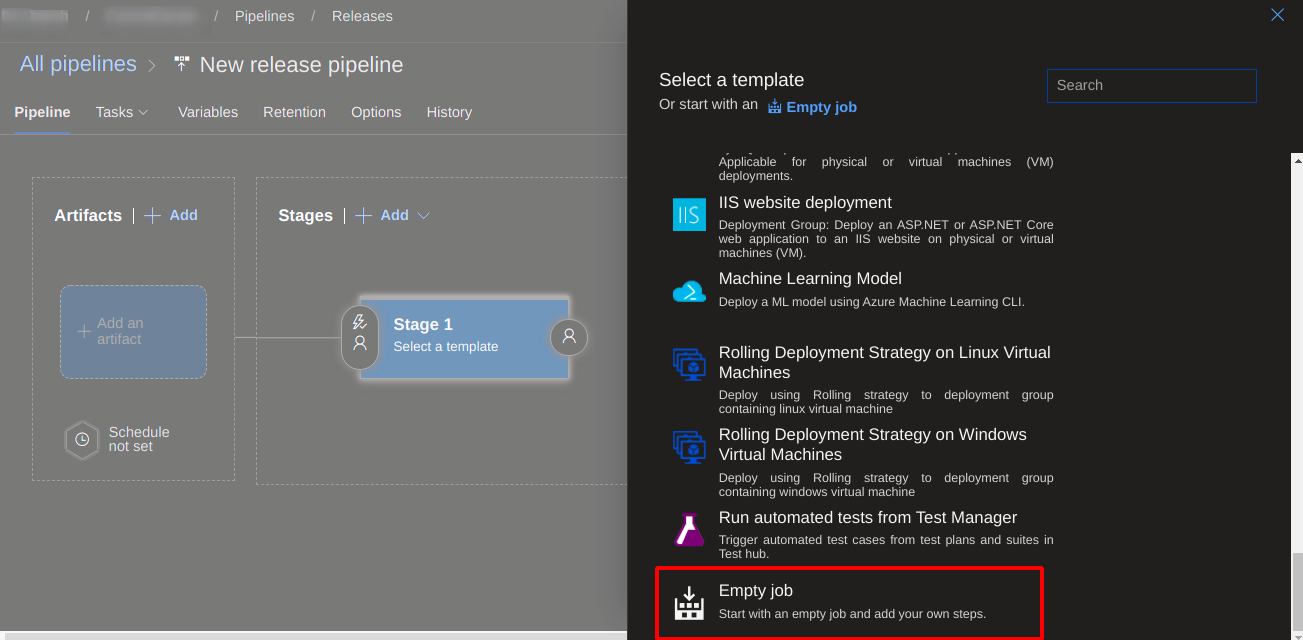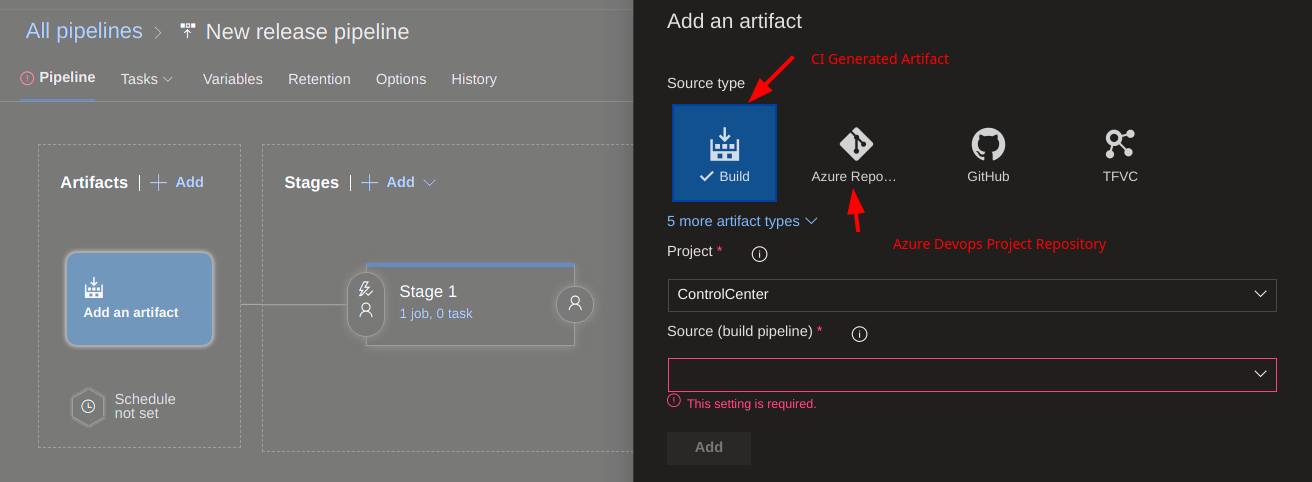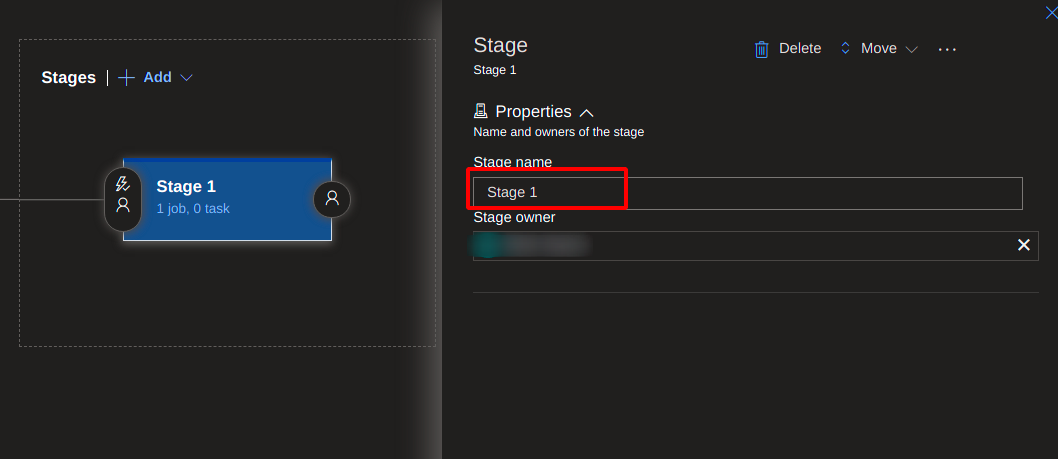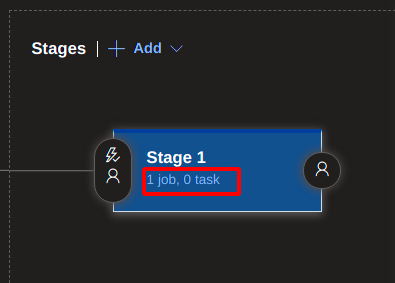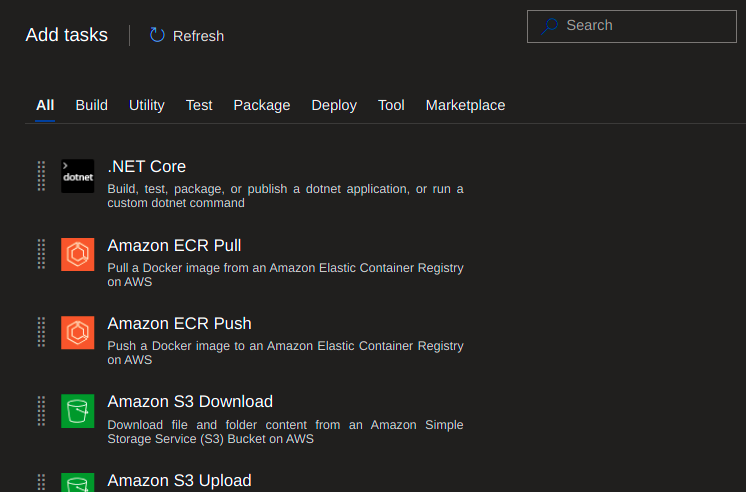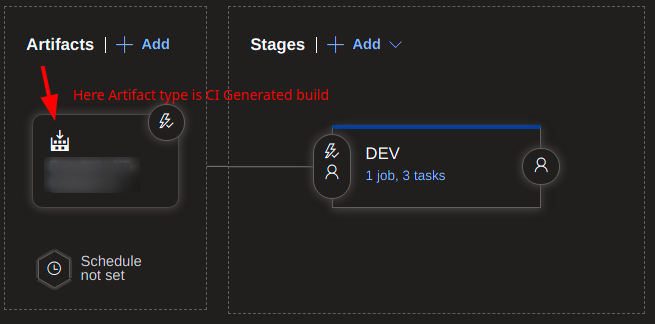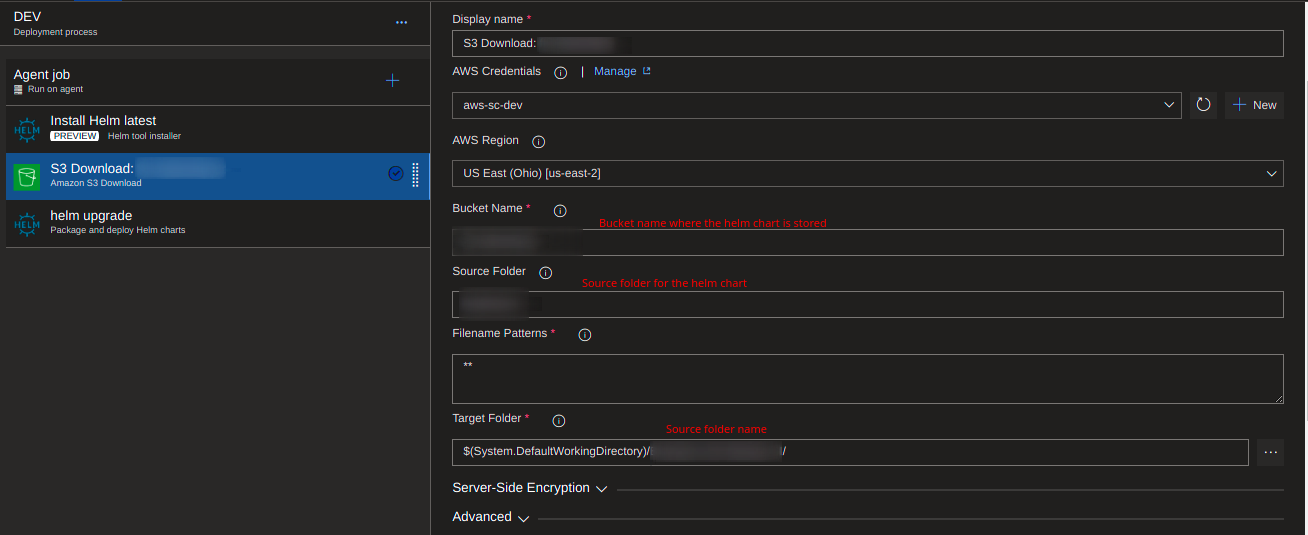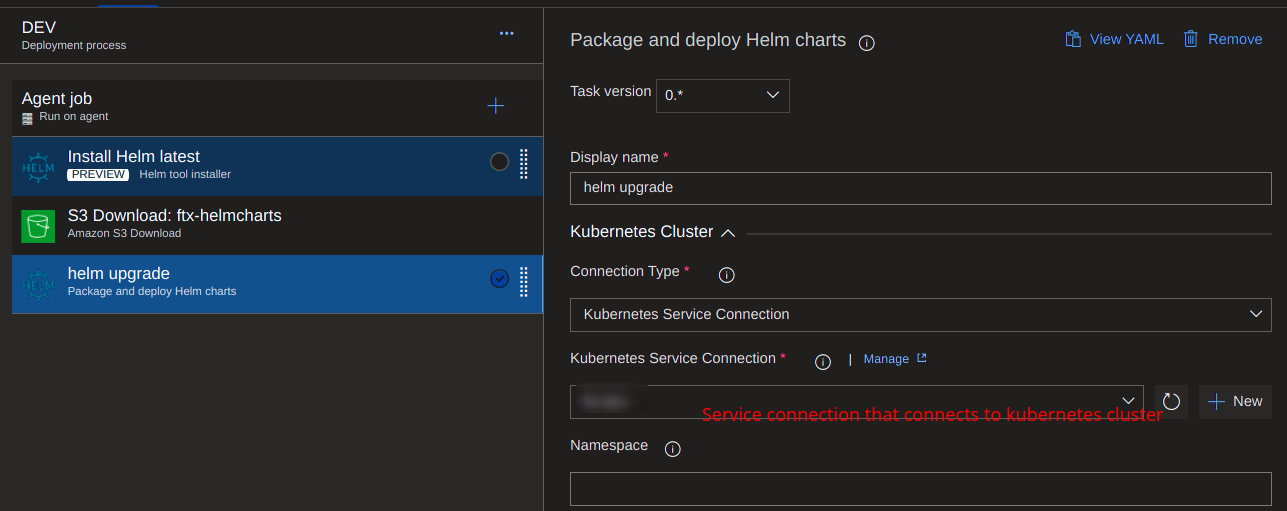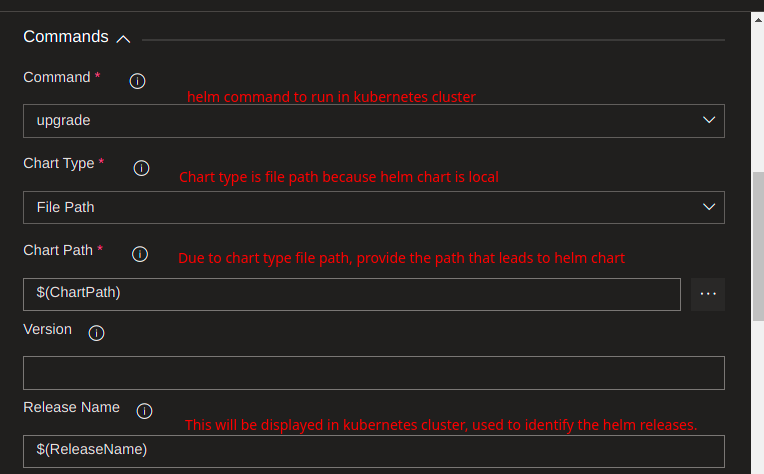- Existing Azure DevOps Project
-
Select the Azure repos git option which will lead to selection of the project repository.
-
Select the repository
-
You'll have to choose from the following two options:
-
If starter is selected, you'll be given starter yml template for azure pipeline which will look like the following:
🏁 At this point CI Pipeline configuration is done. For how to create pipelines as per your needs you may have to look up the examples.
-
To create CD, Click on the Release as shown in snapshot.
-
Click on create release pipeline
-
You'll be prompted to select a stage task, select empty job to start from the scratch.
-
You'll have to choose artifacts to deploy the app through CD. Artifacts are basically are the dependencies those are needed at deployment time, also it can be a repository or drop or Build artifact generated from CI Pipeline.
-
Here you can set your stage name which will be displayed at the release page. (i.e dev, prod, stage etc.)
-
Once the naming is done, you'll have to setup set of tasks in the stage.
-
You'll be redirected to the particular stage dashboard. Click on ➕ to add job tasks.
-
You'll be prompted to select a tasks from the sidebar menu. (i.e helm task, deploy to app service etc.)
-
Select the task as per your need and configure it.
-
Overall Configuration:
-
Stage Configuration - Helm install:
-
Stage Configuration - Download Helm chart:
-
Stage Configuration - Helm Upgrade:
🏁 At this point CD Pipeline configuration is done. For how to create pipelines as per your needs you may have to look up the examples.
-
Docker build and push to registry
trigger: batch: true branches: include: - ci_cd_bs4goftx # branches.include: mention branch names to add pipeline trigger. paths: exclude: - k8s/* # paths.exclude: mention path name to exclude pipeline trigger. It won't trigger if any changes occurred in mentioned path. pool: cc-prod-k8s-pool # Pool: Which pool to use to run the builds. variables: # Mention variables to use them in further in the pipeline. To use, just insert variable name in $() syntax. solution: '**/*.sln' buildPlatform: 'Any CPU' buildConfiguration: 'Release' repositoryName: 'controlcenter' dockerFileName: './Dockerfile' buildContext: '$(System.DefaultWorkingDirectory)' # This is pre-defined variable. to see more, visit https://docs.microsoft.com/en-us/azure/devops/pipelines/build/variables?view=azure-devops&tabs=yaml imageName: $(repositoryName) tagName: $(Build.BuildNumber) steps: - task: ECRPullImage@1 # Pulls the image from ECR Repository. inputs: awsCredentials: 'aws-sc' # Service connection name that connects to an AWS Account. regionName: 'us-east-2' repository: '$(repositoryName)' # ECR Repository name. imageSource: 'imagetag' imageTag: 'baseV2' # Image tag filter. - task: Docker@2 # Builds the docker image from Dockerfile. displayName: 'Docker build - bs4' inputs: repository: '$(repositoryName)-bs4' command: 'build' Dockerfile: '$(dockerFileName)-bs4' # Dockerfile name. buildContext: '$(buildContext)' # Docker context. Generally where the Dockerfile is located. tags: '$(tagName)' arguments: '--network=host' # has to be given, if you're building an image inside docker in docker configuration. condition: eq(variables['Build.SourceBranch'], 'refs/heads/ci_cd_bs4goftx') # Activate this task only if it matches the given condition. - task: ECRPushImage@1 # Push the built image to ECR. displayName: 'Push to ECR - bs4' inputs: awsCredentials: 'AWS service connection' regionName: 'us-east-2' imageSource: 'imagename' sourceImageName: '$(imageName)-bs4' sourceImageTag: '$(tagName)' repositoryName: '$(imageName)-bs4' pushTag: '$(tagName)' autoCreateRepository: true condition: eq(variables['Build.SourceBranch'], 'refs/heads/ci_cd_bs4goftx')
